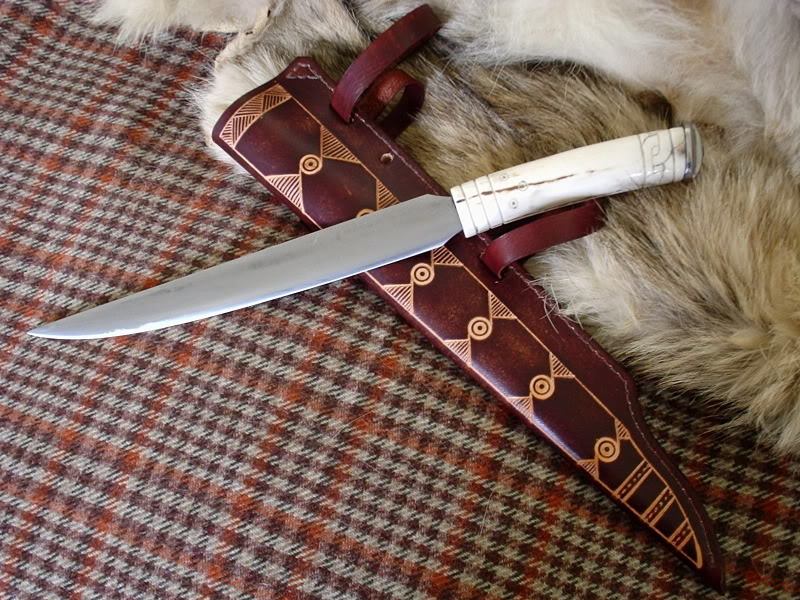Thought I would post a pic of this one I made a while ago for the author Stephen Pollington.Found in an early Anglo Saxon context in Essex, England.

It is a slightly unusual seax with a straight back and long slim curve to the belly. I have not seen many with that profile in the UK from the early period although it reminds me somewhat of later medieval finds. Am I alone in this ? I can get quite inspired by the obscure and the unusual has anyone else come across this pattern elsewhere ? I have seen but a couple namely Kings worthy early AS cemetery in Hampshire UK and this one.
Just over 9 inches in the blade with an iron pommel.

